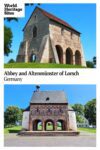Abbey and Altenmünster of Lorsch
By Rachel Heller
What is the Abbey and Altenmünster of Lorsch?
These two buildings – an abbey church and what was probably a ceremonial entrance – are all that remains of an ancient monastery at Lorsch. They’re particularly rare because they date to the pre-Romanesque Carolingian era. This was a period starting in the 700s AD that marked the beginning of the Holy Roman Empire.
Disclosure: This article contains affiliate links. Making a purchase through an affiliate link will mean a small commission for this website. This will not affect your price.
At the time of Charlemagne’s rule, the Carolingian Empire extended to most of Western Europe. Charlemagne himself attended Lorsch Abbey’s consecration in 774, and several of his relatives were buried in its graveyard. It served as a monastery – despite several fires and various restorations – for about 800 years, until the Protestant Reformation in the 16th century.
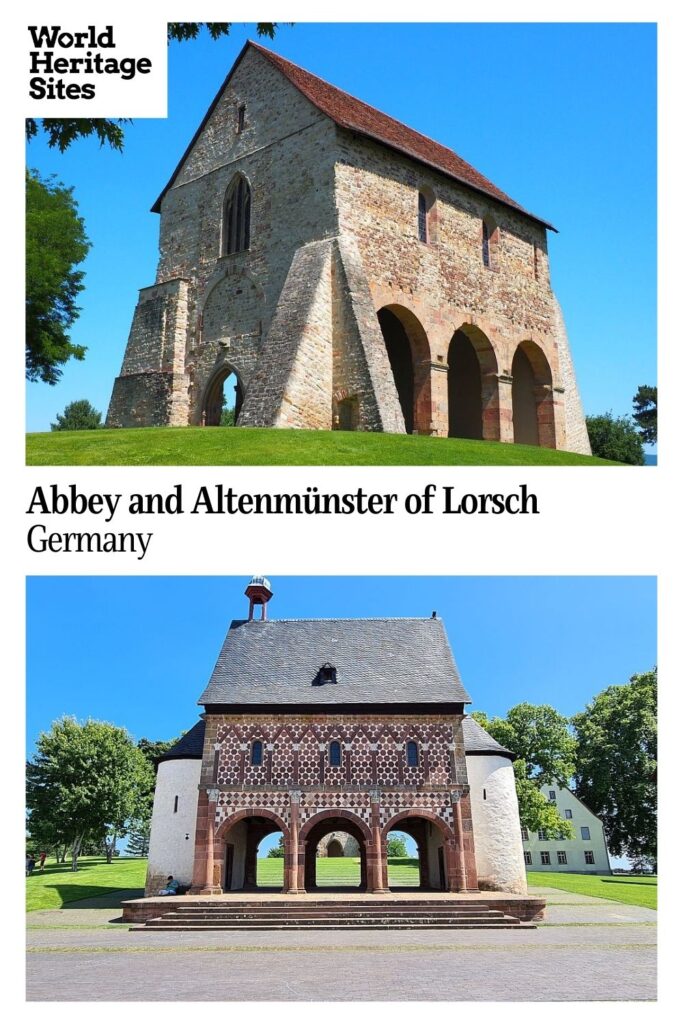
Why is the Abbey and Altenmünster of Lorsch a UNESCO World Heritage site?
The gatehouse still stands and, at 1200 years old, is in remarkably good condition. It is a rare example of intact Carolingian architecture, complete with surviving sculptural and painted details. It marks the beginning of the Middle Ages, constituting, according to the UNESCO website, “architectural evidence of the awakening of the West to the spirit of the Early and High Middle Ages under the first King and Emperor, Charlemagne.”
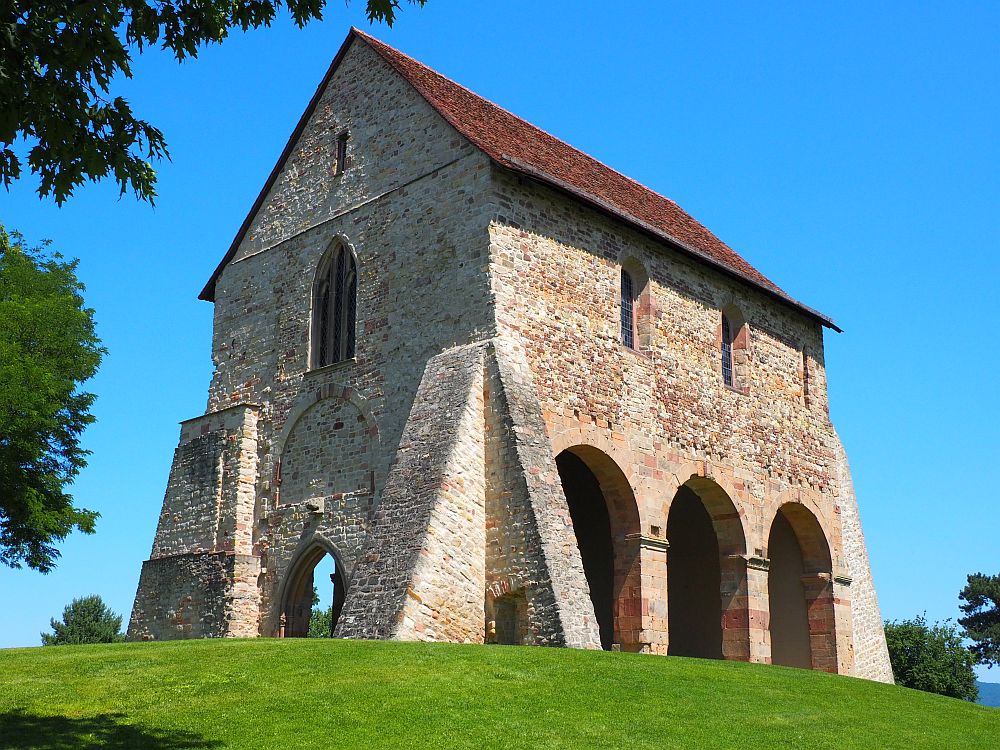
What can you expect on a visit to Lorsch?
There’s not much left of the abbey: just the gatehouse and some of what was once a larger church. The church today, a fragment of the original basilica, is set quite picturesquely on top of a hill, and does give an indication of how important it once was.
The gatehouse (called the Königshalle) is unusual in form, with an open gallery below and a complete room upstairs – only accessible as part of a tour. It’s generally believed that it was originally used as a reception hall for visiting dignitaries, but an alternate theory is that it was a courtroom.
The rest of the grounds of what used to be a large monastery are essentially an archeological site, and many of the archeological finds from the grounds are on display in the tithe barn, a structure dating to the 16th century. One piece of the original monastery wall still stands as well.
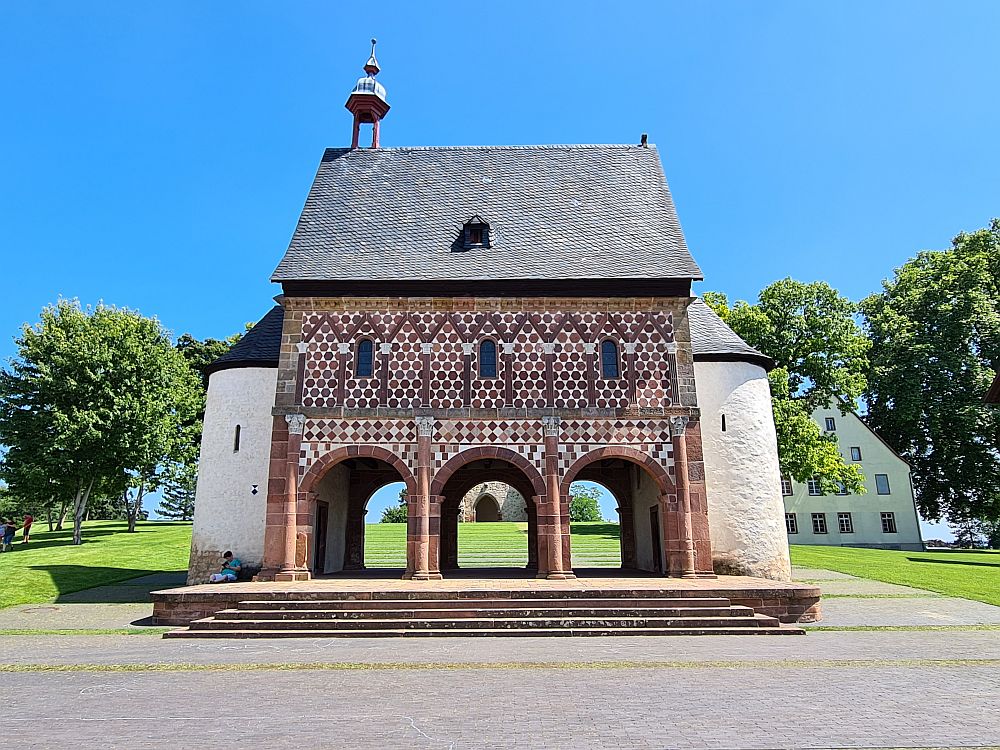
Is Lorsch worth visiting?
In my view it’s worth visiting if a) you happen to be in the area or b) the Carolingian period interests you. The gatehouse is certainly attractive, but probably not worth a separate trip.
What sorts of travelers would like Lorsch?
Primarily those interested in history and architecture would enjoy a visit to Lorsch.
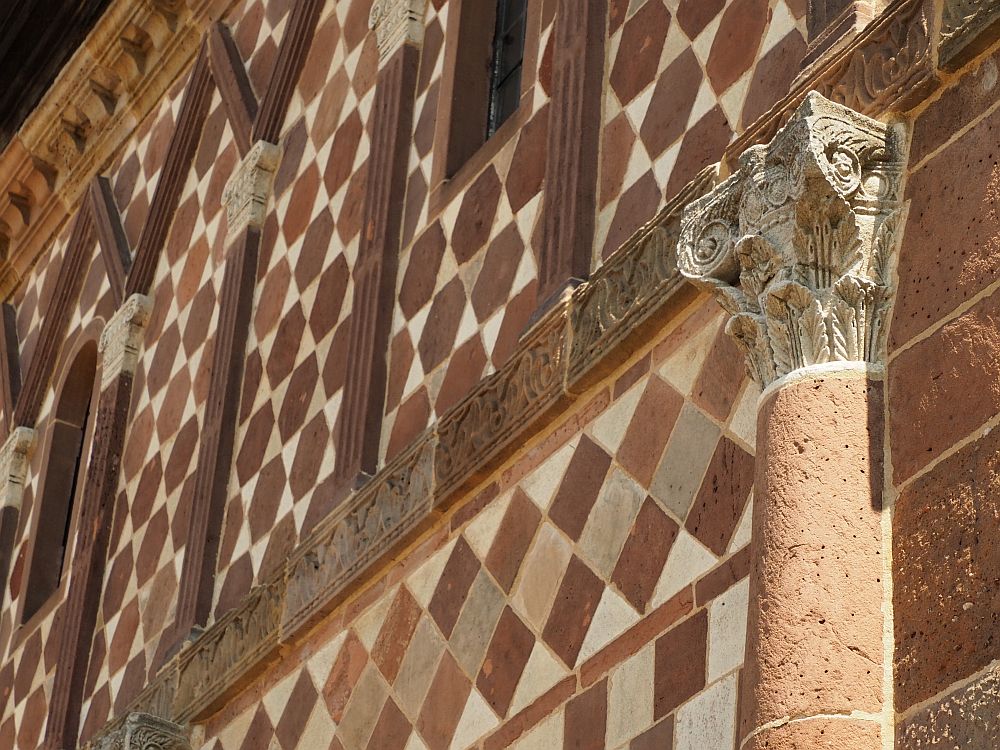
Tips for visiting the Abbey and Altenmünster of Lorsch
Sign up for the tour of the inside of the gatehouse. Some of the original architectural paintwork is still there, as well as some pieces of frescoes.
Take a look at the exhibition in the tithe barn (formerly a row of four tithe barns). Also take a stroll around the herb garden, which is based on an ancient book called the Lorsch Pharmacopoeia, part of the monastery’s once-extensive library whose collection is now scattered to other institutions.
The Freilichtlabor Lauresham (Laboratory for Experimental Archeology) nearby is a model of a Carolingian farm, operated as a working farm to show how people of the early Middle Ages lived.
The town of Lorsch, by the way, is quite charming too, with its half-timbered houses. The main square is right next to the Abbey grounds.
Book your accommodations in Lorsch or nearby towns.
Especially if you’re traveling by car, a visit to Lorsch would combine well with UNESCO-listed Speyer Cathedral and/or Maulbronn Abbey.
Where is Lorsch?
By car, Lorsch is about 50 minutes south of Frankfurt and a half-hour north of Heidelberg. You should be able to find street parking in Lorsch.
By train or bus, it’ll take about an hour from Frankfurt, and you’ll have to transfer in Bensheim. From Heidelberg it’ll take about a half hour, again including a transfer in Bensheim.
For more information about the Abbey and Altenmünster of Lorsch, its opening hours and admission fees, see its official website.
Have you been to Lorsch? If so, do you have any additional information or advice about this UNESCO World Heritage site? Please add your comments below!

